The capital of Chile’s Magallanes region, the southernmost city in the continental Americas and one of the southernmost cities in the world, Punta Arenas is a unique place. The city has a storied maritime history. Prior to the construction of the Panama Canal, the Megellan Strait was the quickest way for ships to travel between the Atlantic and Pacific Oceans and so became a crucial trade route. As the main settlement along the strait, Punta Arenas became a prosperous outpost for vessels sailing between the two oceans.
Over the years the city has attracted a mix of voyagers, merchants and explorers from all over the world. With its interesting mix of architectural styles, its desolate coastal landscapes and melting pot of different cultural influences, Punta Arenas is a striking place to visit in Patagonia. Check out this walking tour of the main sites of the city centre.
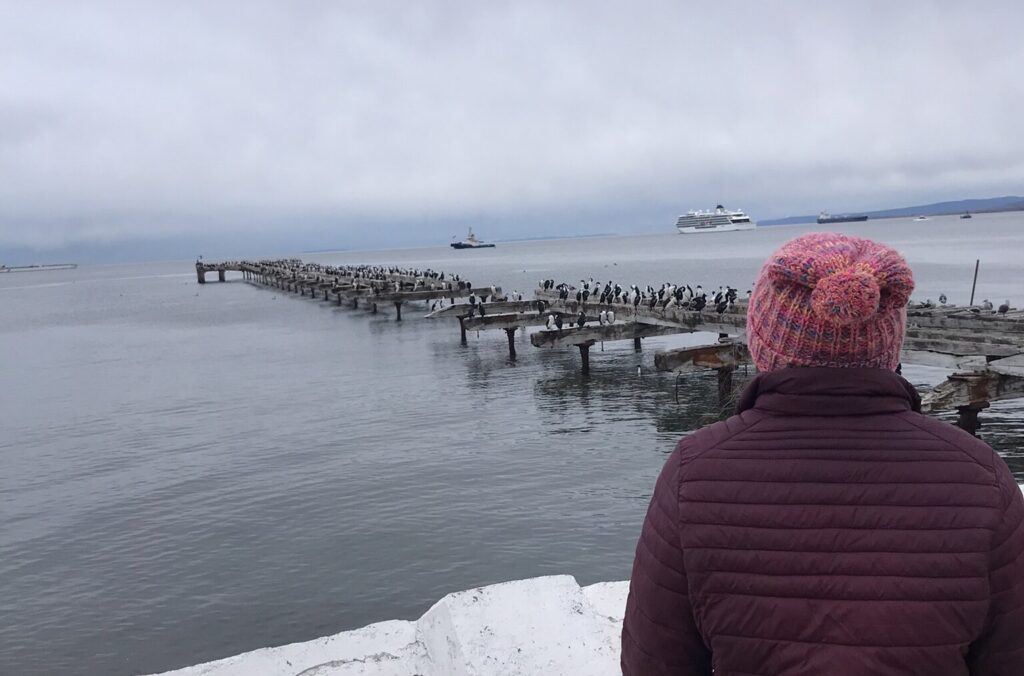
Muelle Loreto is a great place to spot seabirds
Start the tour at the Museo Nao Victoria. This is located around 7 km to the north of town, near to the main highway. From the city centre it takes around an hour to walk, or alternatively take a taxi or Uber.
Stop 1 – Museo Nao Victoria
This outdoor museum contains information about some of the pioneering maritime expeditions by European explorers to the region, as well as life-size replicas of the famous vessels that were used. The museum mainly focuses on two voyages – the Nao Victoria, which became the first ship to successfully circumnavigate the world and discovered the Strait of Magellan in the process, and the HMS Beagle which famously carried Charles Darwin on his voyage of discovery. It also contains information about Ernest Shackleton’s attempts to reach Antarctica aboard the Endurance and the Ancud, the Chilean ship that sailed to Patagonia to claim sovereignty over the region.
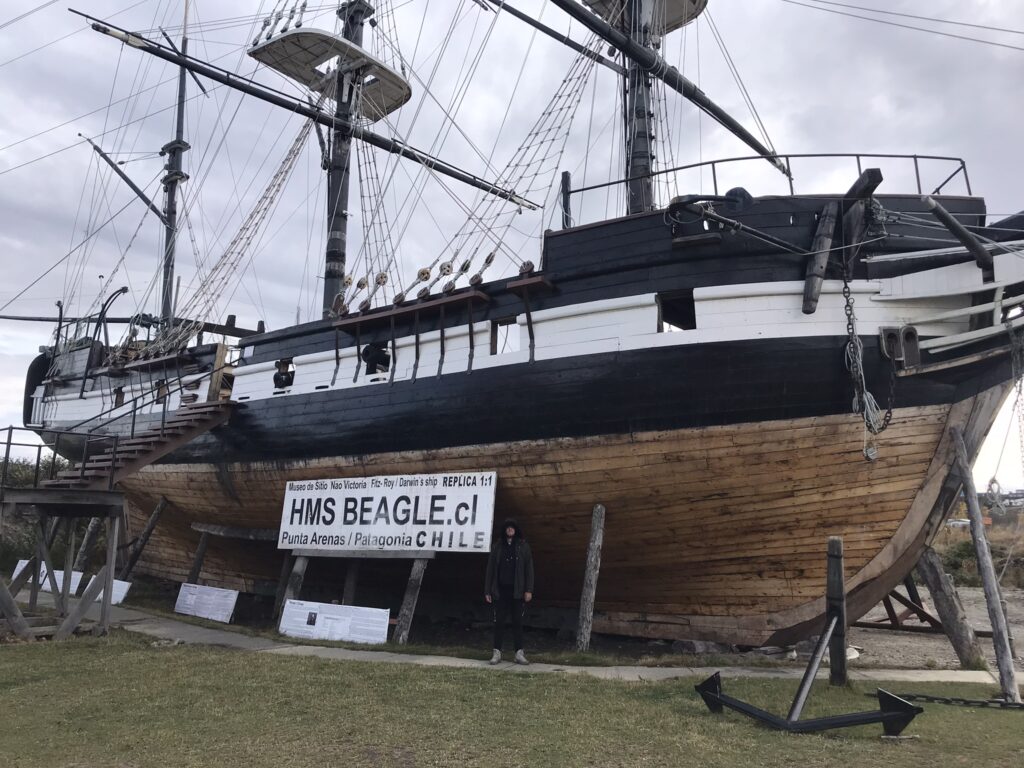
The Beagle in all its glory
It is possible to fully explore the replica ships and get a real sense of the conditions in which the sailors lived and worked in the era of heroic exploration. We loved going above and below deck on the famous ships. The museum also has plenty of in-depth information in English about the expeditions, their captains and key figures.
About 200 metres south of the museum and across the highway you can find the Mirador Humedal 3 Puentes. This otherwise unspectacular wetland is a good place to spot pink flamingos.
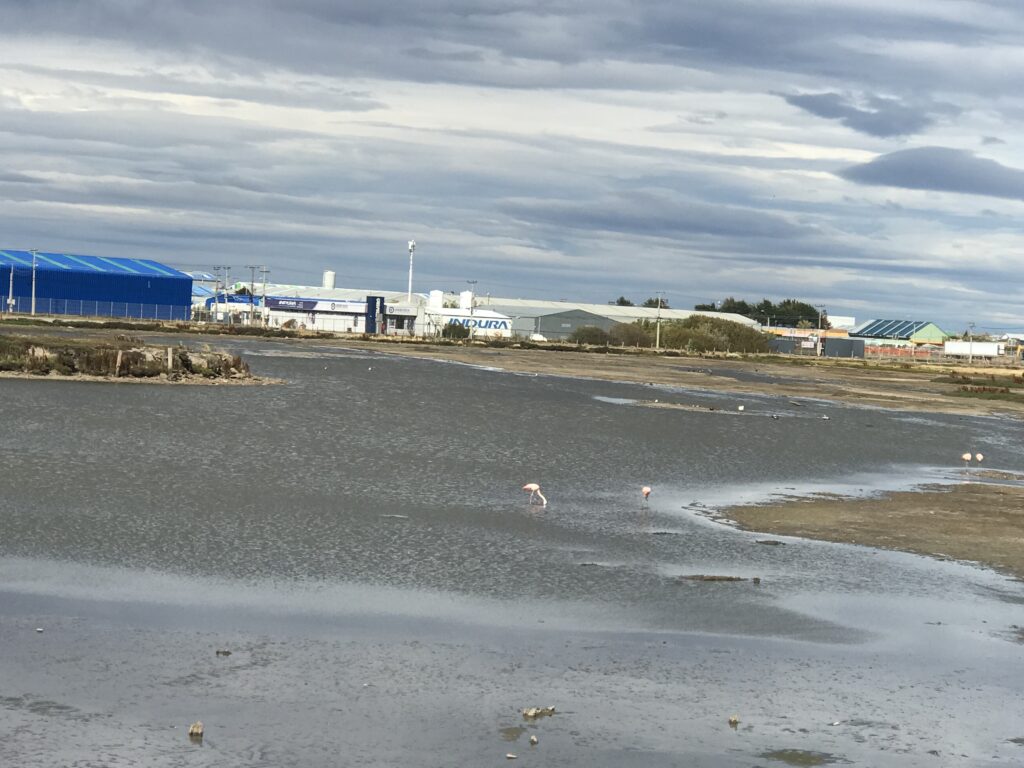
Flamingo spotting at the Mirador Humedal 3 Puentes
After visiting this area we decided to walk back to the city, which took about an hour and a half. Alternatively you can call a taxi or an Uber to take you back to town. Either way, head towards Avenida Bulnes and the city’s cemetery.
Along the main street leading to the cemetery (Av. Bulnes) there are several memorials and sculptures, including the Monumento de Ovejero, a large bronze statue set commemorating local shepherds. There is also a monument to the city’s Croatian community. Croatians were one of the largest immigrant groups to Punta Arenas at its peak and the Croatian community had a big impact on the development of the city.
Stop 2 – Cemetery of Punta Arenas (Cemetario Municipal Sara Braun)
This large and well-maintained cemetery is indicative of the diverse history of Punta Arenas. Typical of many Latin American cemeteries, there are large family mausoleums mixed in with smaller individual graves. However if you look closely you will see that a wide variety of nations are represented in the cemetery. Along with Spanish you can find German, English and a number of other languages among the headstones. Here you can also find the grave of Sara Braun, a prominent local businesswoman who played an important role in the history of the city and region.
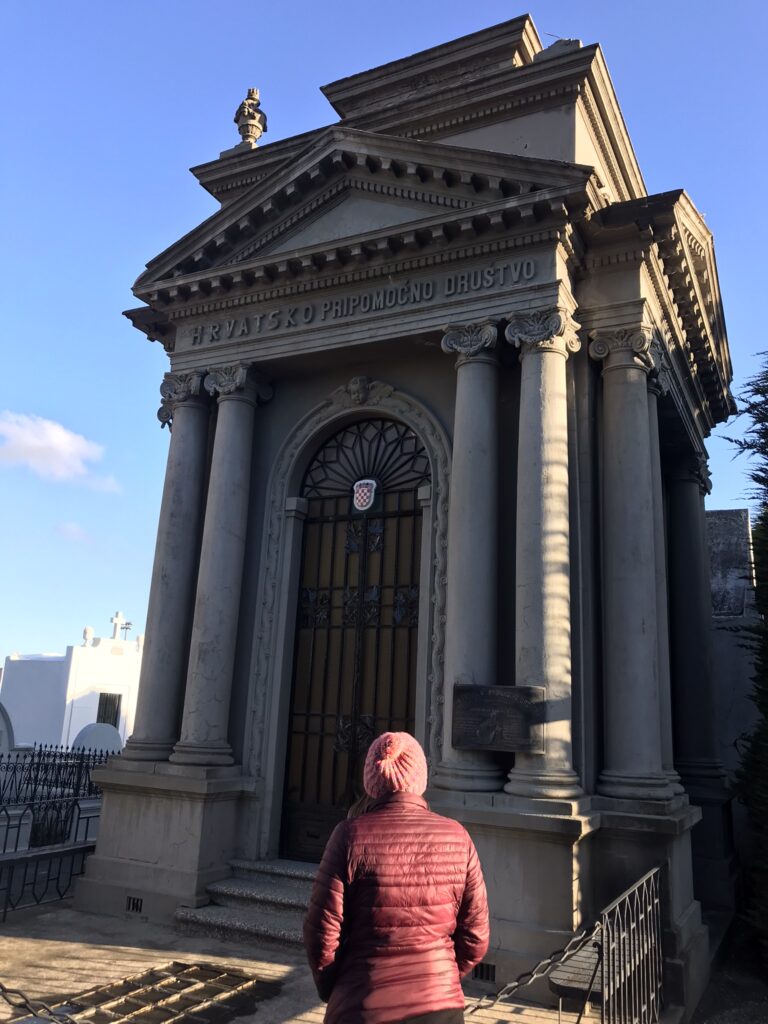
A Croatian mausoleum at the cemetery
Near to the cemetery you can find the Museo Maggiorino Borgatello, containing information and exhibitions relating to the region’s nature and history.
After leaving this area, head towards the waterfront and the Costanera.
Stop 3 – Costanera
The Costanera of Punta Arenas is a long walkway stretching out for several kilometres along the shores of the Strait of Magellan. There are numerous statues, sculptures and monuments along the Costanera. The section north of the Rio de las Minas has many ‘small squares’ dedicated to different groups of local settlers, merchants or tradesmen. There are also some larger sculptures such as the Circumnavigation Monument (dedicated to Magellan’s voyage which became the first to circumnavigate the globe) and the Monumento A Tripulantes Goleta Ancud, which commemorates the Chilean ship which sailed to Patagonia to claim the land for Chile.
The clean and well-maintained Costanera is a great place to sport seabirds and take in some of the best views of city and across the strait. We even spotted some questionably-placed basketball courts next to the waterfront.

Probably not the best place for a basketball court
As the walkway turns to the east, you can find the Muelle Loreto. This old wooden pier, now a popular hangout for imperial cormorants, is one of the best places to spot wildlife in the city. Nearby is the Muelle Prat, the modern pier and port which also contains the old-style port clock.
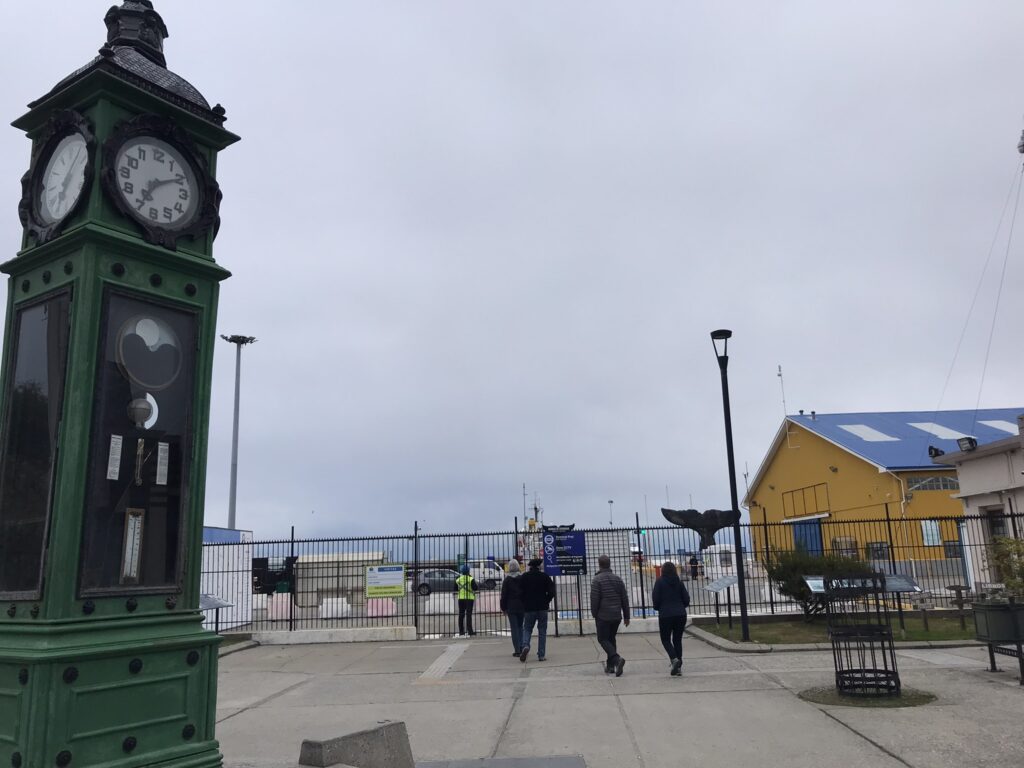
The old clock and modern pier at Muelle Prat
A few kilometres further south along the Costanera you can find some famous shipwrecks, including the wreck of the Lord Lonsdale. For now, head back inland and towards the Plaza de Armas.
Stop 4 – Plaza de Armas
In and around the Plaza de Armas you can find many historical and ornate mansions which once belonged to various maritime authorities, guilds and local figures. Most of these buildings date back to the turn of the 20th century, when Punta Arenas was a key port on one of the world’s major shipping routes prior to the construction of the Panama Canal. Look out for the old Croatian guild building one block to the southeast of the main square on Av 21 de Mayo.
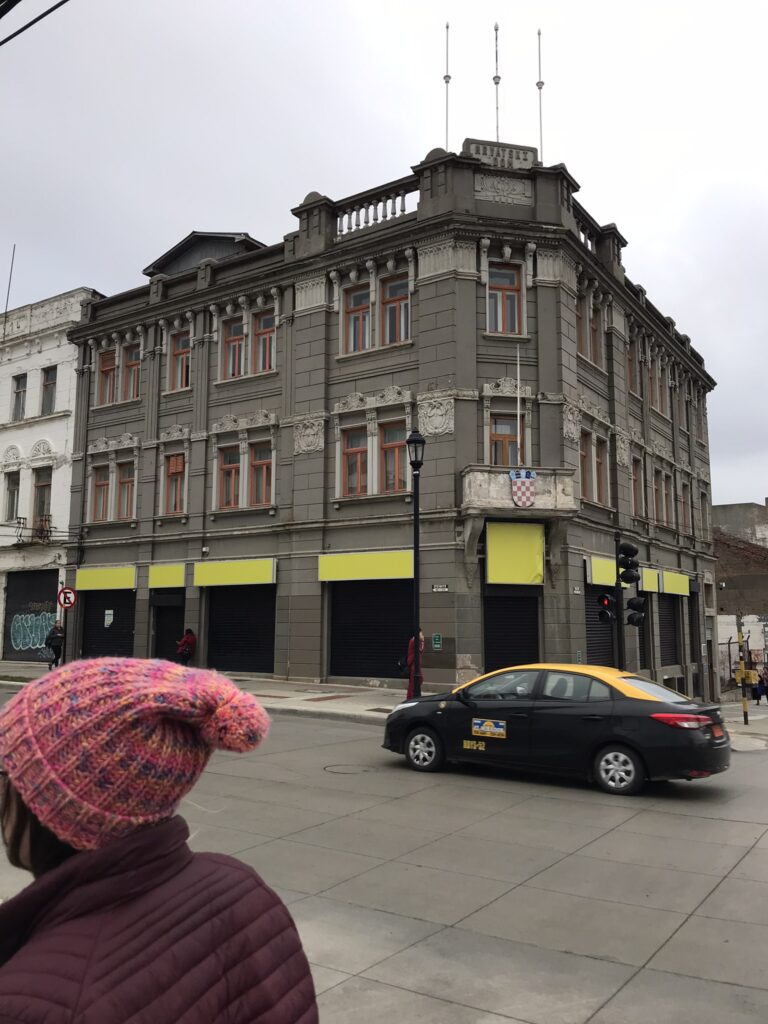
As well as the cathedral and municipality buildings, the Plaza de Armas also contains the Sara Braun Palace. This grand mansion was once owned by the prominent local businesswoman and later became a private members club. A small section of the building is now open to the public, it is possible to tour a few of the rooms to take a look at the opulent interior decoration and see how the aristocracy of the city lived during its heyday.

Sara Braun Palace is one of the many grand mansions in Punta Arenas
Two blocks northeast of the Plaza de Armas on Avenida Cristobal Colon you can find the Casa de los Derechos Humanos, a relic from a dark recent chapter in Chile’s history. This burned-out building was once a mansion designed by a prominent Punta Arenas architect to be his own home. In the 1970s it was repurposed as the local headquarters of the Chilean intelligence service and became the main torture and interrogation centre in this part of the country during Pinochet’s dictatorship. The house was listed as a national monument by the Chilean government in 2016 and attempts were being made to turn the building into a museum and house of remembrance before it was burned down.
After leaving this area, head northwest to the Mirador Cerro de la Cruz.
Stop 5 – Cerro de la Cruz
Finish the tour at the Mirador Cerro de la Cruz, a viewpoint giving some the best views of the city and across the Strait of Magellan to the Tierra del Fuego. From here you can look south along the coast towards Fuerte Bulnes and Cape Froward, the southernmost point of the continental Americas.
For more Chile content, click here!
This guide is now available on GPSmyCity!
